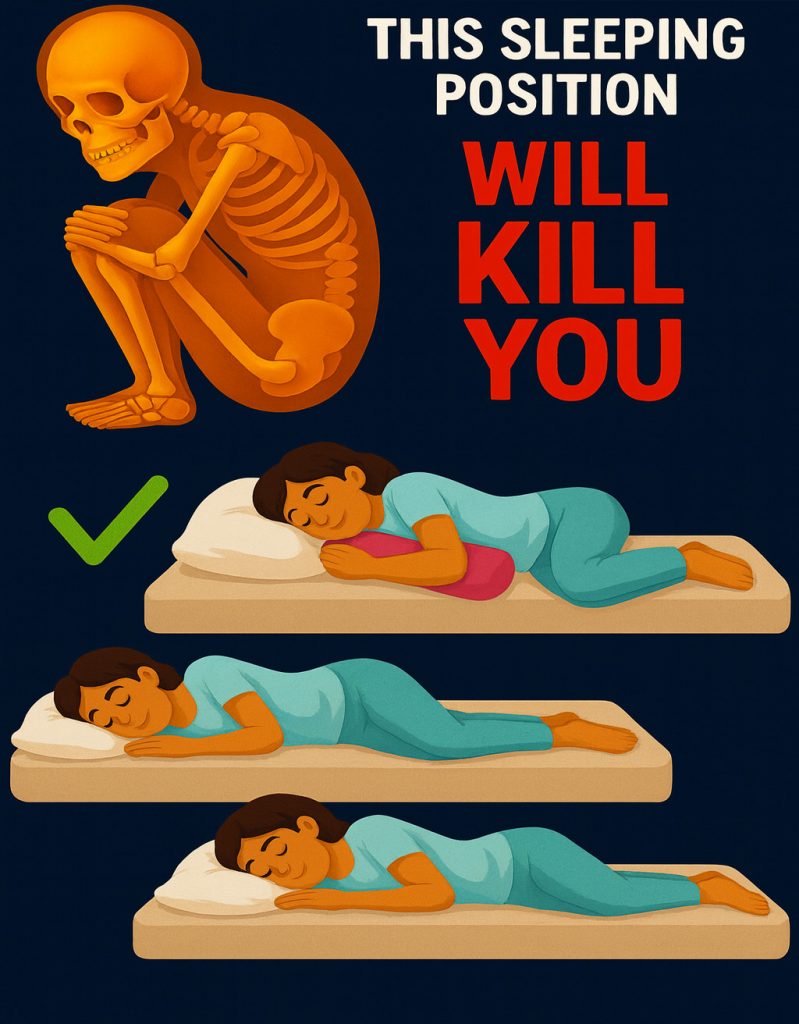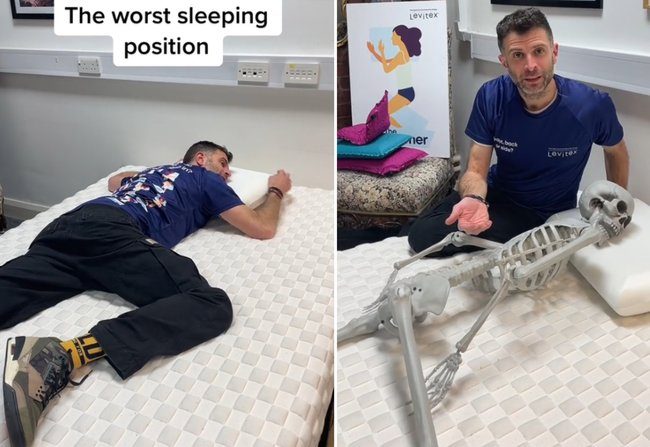Most sleep experts and physical therapists consider sleeping on your stomach (prone position) to be the least ideal, and potentially the most dangerous, position for your musculoskeletal health, especially over the long term.

While it can temporarily reduce snoring and mild sleep apnea, the risks associated with spinal and nerve strain often outweigh these benefits.1
Why Sleeping on Your Stomach is Considered Dangerous
The core issue with sleeping on your stomach is that it is the only position that makes it virtually impossible to maintain a neutral alignment for the spine, which can lead to chronic aches and pains.

1. Spinal Misalignment and Lower Back Strain2
- Weight Distribution: Most of your body weight is concentrated in the center (abdomen/torso).3 When lying on your stomach, this weight causes your mid-section to sink deeper into the mattress, forcing your back to arch unnaturally.4
- Flattening the Curve: This position flattens the natural curve of your spine, putting significant stress and strain on the lower back (lumbar spine).5 Over time, this stress can lead to chronic lower back pain and stiffness.6
2. Severe Neck and Shoulder Damage
- Neck Twisting: To breathe, you must turn your head completely to one side, forcing your head and cervical spine to be out of alignment with the rest of your body for hours.7
- Compression Risk: This prolonged twisting compresses the vertebrae and muscles in your neck, leading to stiffness, muscle tension, headaches, and an increased risk of a herniated disc over time.8
- Numbness: The awkward positions your arms often take (tucked under the pillow or to the side) can compress nerves and restrict blood flow, leading to numbness, tingling, and shoulder pain.9
3. Critical Risk for Infants (SIDS)10

- For babies, the prone position is associated with a significantly elevated risk of Sudden Infant Death Syndrome (SIDS).11 Health organizations universally recommend that infants always be placed on their backs to sleep.12
4. Other Negative Effects
- Facial Wrinkles: Pressing your face directly into the pillow for hours creates compression and creases in the skin, which can lead to the formation of permanent “sleep wrinkles” over time.13
- Pregnancy: Sleeping on the stomach is strongly discouraged during the second and third trimesters, as the weight of the uterus puts severe pressure on the spine and can restrict blood flow to the heart and fetus.14
Tips for Stubborn Stomach Sleepers
If you absolutely cannot sleep in any other position, you can minimize the damage:15
- Use a Thin Pillow (or none): The goal is to keep your head as flat as possible to reduce the twisting angle of your neck.16
- Pillow Under the Pelvis: Place a thin pillow directly under your pelvis/lower abdomen.17 This helps lift your mid-section, reducing the arch in your lower back and better aligning your spine.
- Stretch: Perform gentle stretching in the morning to restore proper spinal alignment.18









